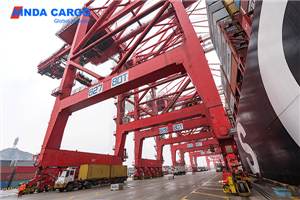The trade situation between China and the United States in July 2025
July 2025 is a key window of opportunity for the US-China trade game, with multiple factors intertwined that could lead to a tense situation, the key dynamics of which are set out below:
⚖️ 1. Core Tariff Nodes and Negotiation Pressure
July 8 Tariff Decision Window: the U.S. was scheduled to impose a new round of tariffs on China on that date, which has been postponed due to a court stay (under appeal) but is being used by the Trump administration as an important bargaining chip to pressure China. Whether China and the U.S. can reach an agreement before this point will directly affect the subsequent trade direction.
Negotiation deadline pressure: Trump has hinted that he may extend the August 11th negotiation deadline, but the U.S. top management insisted on “locking the tariffs on China”, the negotiation stalemate continues unbroken. If no agreement is reached before August 11, the U.S. economy is afraid of stagflation and debt default double risk.
🔍 2, U.S. trade policy trends
Strengthening of non-tariff barriers:
Anti-dumping/countervailing measures: July 31, the U.S. International Trade Commission (ITC) will announce a final double reverse ruling on China's low-speed people mover vehicles, with some companies facing punitive tariffs of 478%.
New Investigation Launched: On July 7, the ITC is going to make a preliminary ruling on the double reverse case of hardwood decorative plywood from China, India and Vietnam, which may further expand the scope of trade restrictions.
Supply chain “de-Chinaization”: the U.S. Supply Chain Security Act pressures companies to shift production capacity, Apple, Tesla and others to accelerate the relocation of production lines to India, Vietnam, Mexico.
💰 3, financial and economic games
Debt and monetary policy:
Trump plans to push for a $4 trillion debt ceiling increase and large-scale debt issuance in July, in an attempt to alleviate fiscal pressures;
The Federal Reserve is under pressure to cut interest rates for its July 29th rate meeting, which could exacerbate the risk of economic stagflation if delayed until September.
Trade data resilience : Despite tariff pressure, China's exports to the U.S. grew 4.5% in Q1 2025 against the trend, with a surplus of $70 billion, underscoring the U.S. market's dependence on China's supply chain.
🌐 4. China's response strategy
Diversified market layout:
Accelerate cooperation with ASEAN, the Middle East, and Latin America, and expand RMB settlement (e.g., Saudi Arabia's oil trade) through the Belt and Road;
Attract European car companies (Volkswagen, BMW) to expand their investment in China, and counteract the influence of the US on China's supply chain. Attract European automobile companies (Volkswagen, BMW) to expand their investment in China to counteract the EU's “de-risking” policy.
Technological countermeasures: Limit exports of key raw materials such as gallium, germanium, and rare earths to counter the U.S. technological embargo.
📈 5. Short-term trade volatility forecast
May-July export rebound: driven by the end of the tariff policy adaptation period, peak season stocking demand, exports from China to the United States are expected to reach 98.4 trillion yuan (three-month total), but the freight price increases and PPI transmission pressure may accompany
.
Re-export trade is restricted: the U.S. has strengthened its scrutiny of Vietnam, Mexico and other transshipment destinations, and the structural adjustment of Chinese companies shifting to emerging markets such as ASEAN and the Middle East has accelerated.
💎 Conclusion
July 2025, the U.S.-China trade will be tug-of-war around three main lines: tariff showdown, supply chain reconstruction, and financial game. The U.S. tries to take the strategic initiative through “tariff leverage + debt renewal”, while China hedges its risks with market diversification, technological countermeasures and regional cooperation. Short-term trade rebound and long-term “decoupling” pressure coexist, August 11th negotiation deadline is the key point of clarity.




